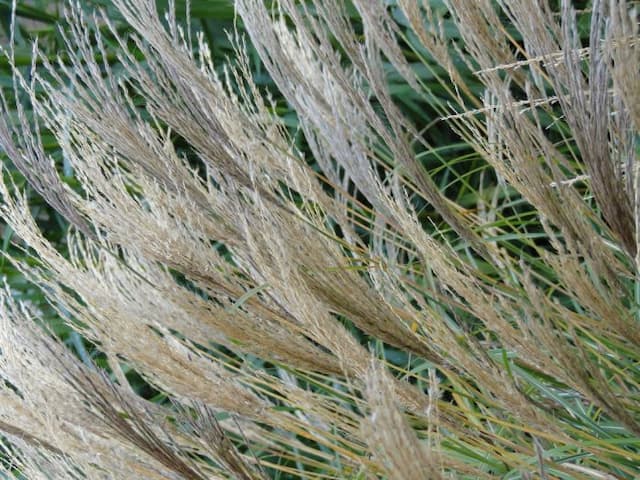Bowles' Golden Grass Milium effusum 'Yaffle' (v)
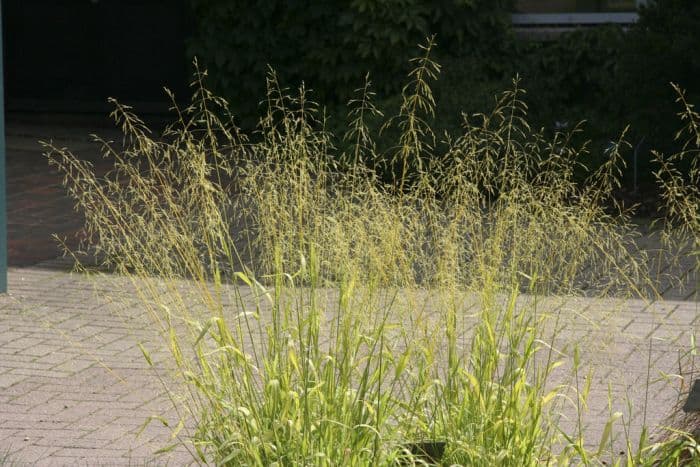
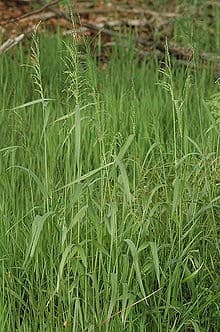
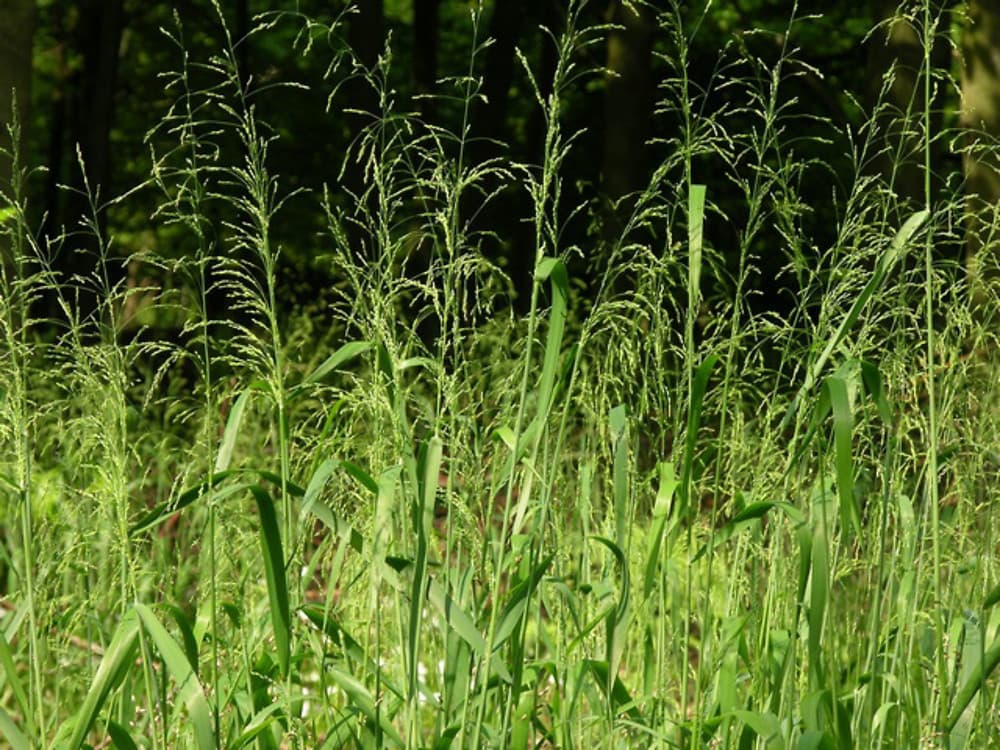
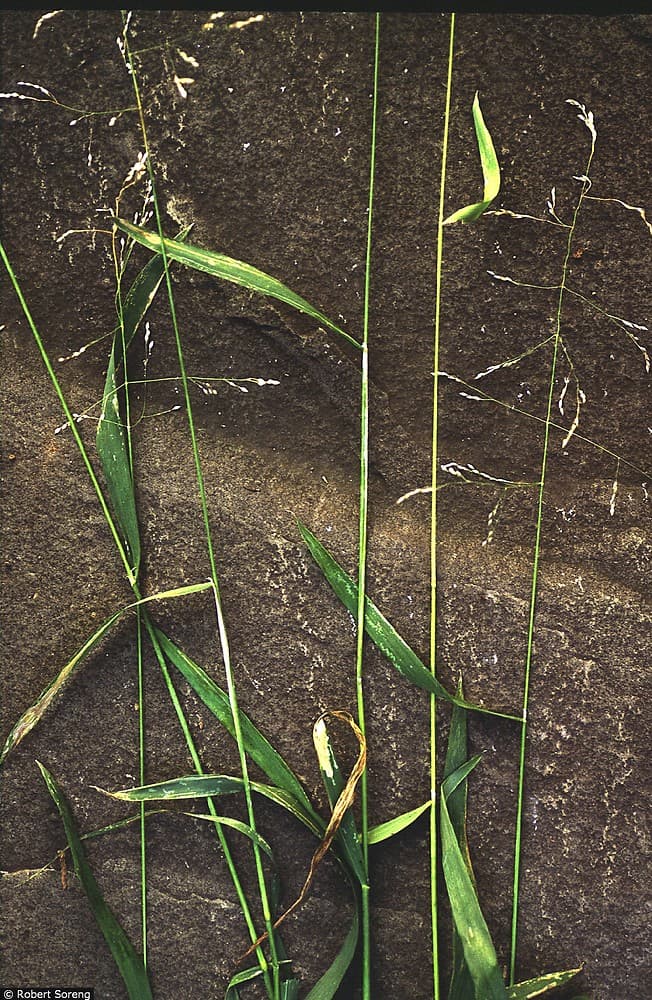
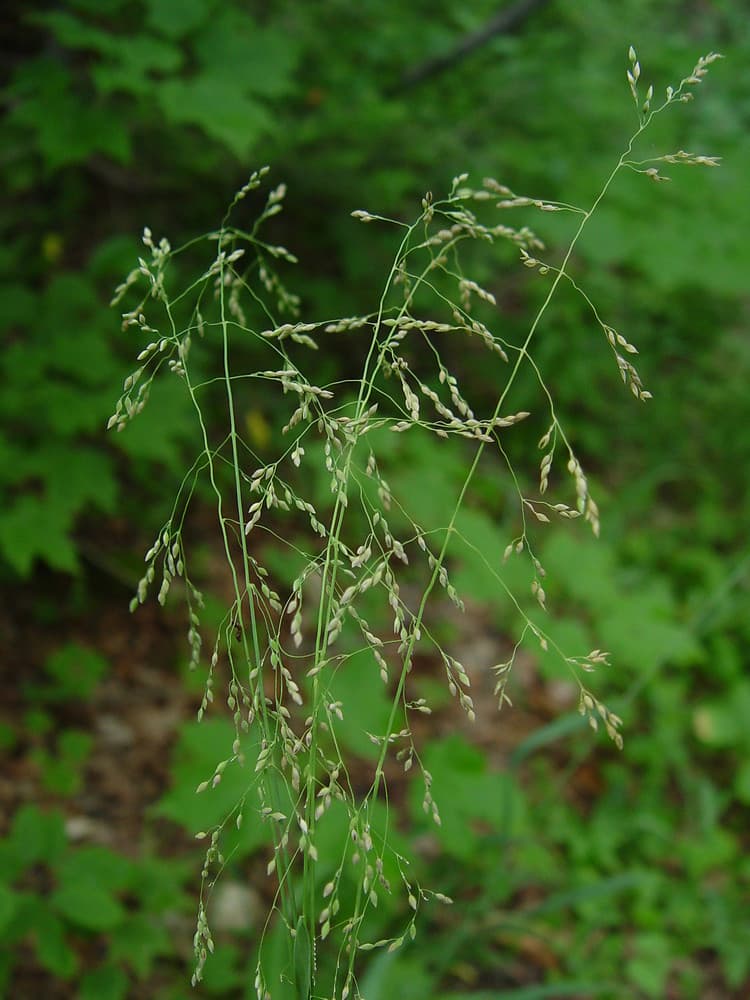
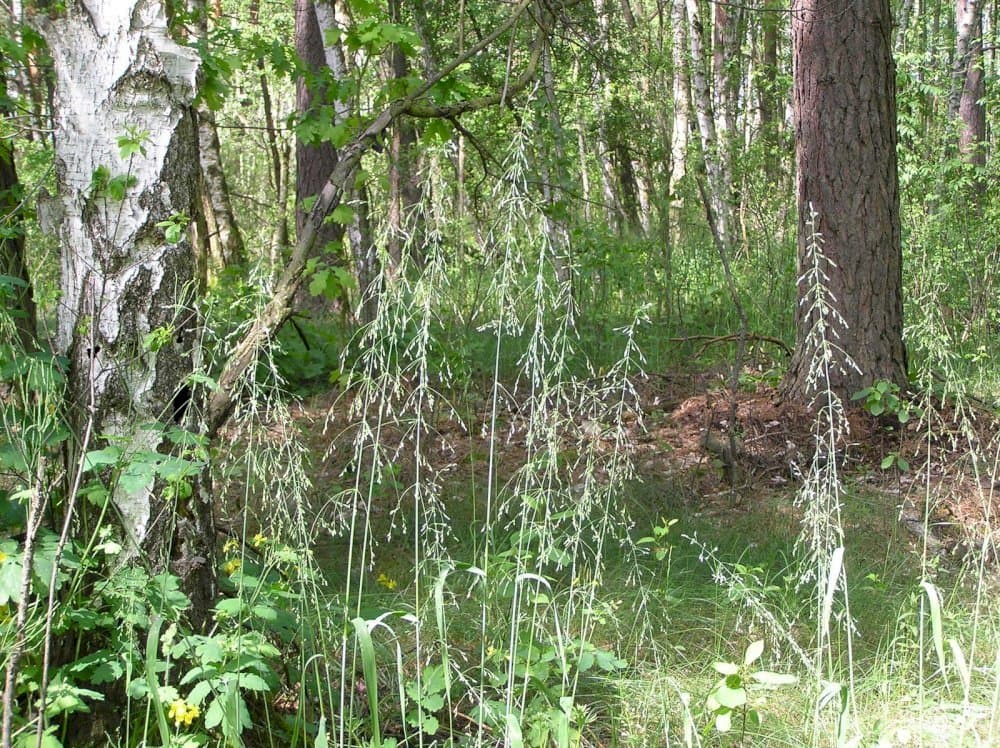
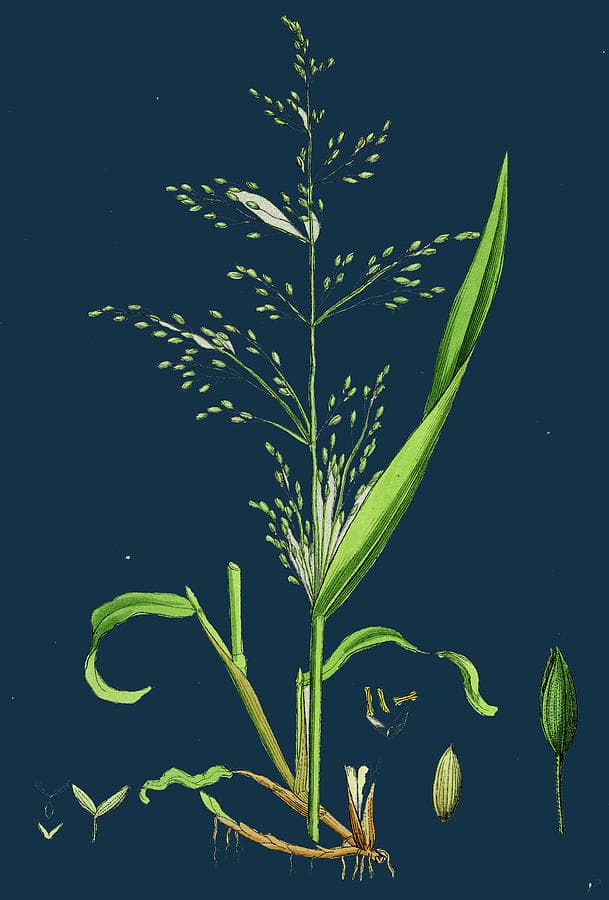
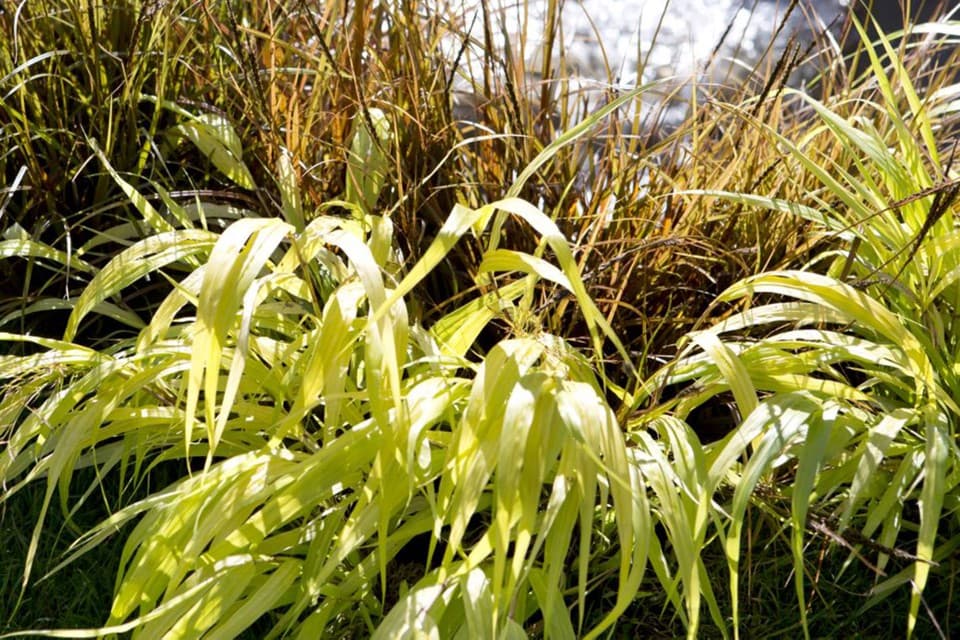
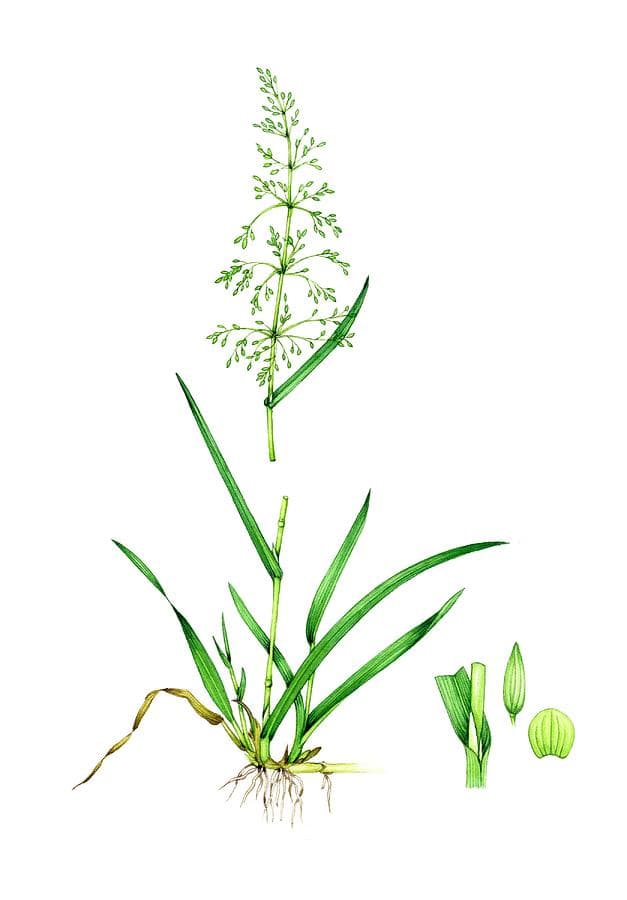
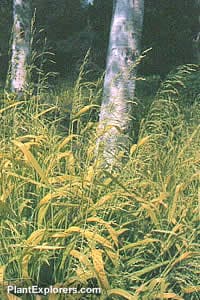
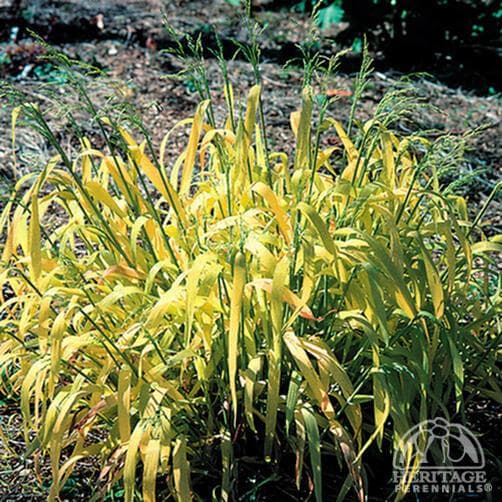
ABOUT
Milium effusum 'Yaffle', commonly known as Wood Millet, presents as a graceful, ornamental grass that adds a light and airy texture to garden landscapes. The foliage of the Wood Millet is a vibrant green color, characterized by graceful, arching leaves that emanate from the base of the plant, creating a fountain-like appearance. In contrast to its delicate leaves, during its blooming period, it showcases an array of small, fluffy, light-colored flowers. These blooms are loosely arranged on slender stems that rise above the foliage, catching the breeze and creating a subtle, shimmering effect in the sunlight. The entire plant gives a feeling of lushness and feathery delicacy, which can soften garden edges and provide a beautiful backdrop for more boldly colored flowers.
About this plant
 Names
NamesFamily
Poaceae.
Synonyms
Wood Millet, American Millet Grass, Effuse Millet.
Common names
Milium effusum
 Toxicity
ToxicityTo humans
The plant in question, Milium effusum, commonly known as Wood Millet, does not have a well-documented profile when it comes to toxicity in humans. There are no prevalent reports of Wood Millet being poisonous or causing adverse health effects when touched or ingested by humans. However, it's always prudent to be cautious with any plant not officially recognized as edible, and seeking medical advice is recommended if ingestion occurs and an adverse reaction is noted.
To pets
Similar to its effects on humans, Wood Millet is not known to be toxic to pets. There is no significant evidence to suggest that Milium effusum 'Yaffle' poses a toxic threat to animals such as dogs or cats. Hence, there are no specific symptoms of poisoning associated with this plant for pets. Nonetheless, as a general rule, monitor your pet's health if they ingest any plant material, and consult a veterinarian if you observe unusual behaviors or signs of distress.
 Characteristics
CharacteristicsLife cycle
Perennials
Foliage type
Deciduous
Color of leaves
Green
Height
2 feet (60 cm)
Spread
1 foot (30 cm)
Plant type
Grass
Hardiness zones
5
Native area
Europe
Benefits
 General Benefits
General Benefits- Ornamental Value: Milium effusum 'Yaffle', commonly known as Soft Millet 'Yaffle', adds aesthetic appeal to gardens with its graceful, fountain-like foliage and light green color.
- Shade Tolerance: This plant is well-suited for shaded areas where other plants might struggle, making it ideal for woodland gardens.
- Low Maintenance: Soft Millet 'Yaffle' requires minimal upkeep, making it a good choice for gardeners looking for low-maintenance plants.
- Drought Resistance: Once established, it can tolerate periods of dry soil, making it a resilient addition to the garden.
- Cold Hardy: It is capable of surviving in colder climates, which makes it suitable for a range of geographical locations.
- Wildlife Support: The plant can provide shelter and nesting material for birds, supporting local biodiversity.
- Erosion Control: Its root system helps stabilize soil and can prevent erosion, particularly in shaded, sloped areas.
- Seasonal Interest: Soft Millet 'Yaffle' has a long period of visual interest, from its spring emergence through the fall.
 Medical Properties
Medical PropertiesThis plant is not used for medical purposes.
 Air-purifying Qualities
Air-purifying QualitiesThis plant is not specifically known for air purifying qualities.
 Other Uses
Other Uses- Milium effusum 'Yaffle', also known as Wood millet, can be used as a natural dye source; the plant's stems and leaves can be processed to extract pigments for coloring fabrics.
- The seeds of Wood millet may serve as a food source for some bird species, allowing for bird-friendly landscaping or habitat restoration projects.
- Wood millet can be included in sensory gardens due to its feather-like foliage that adds a soft texture and movement when touched or blown by the wind.
- The tall and elegant structure of Wood millet can be used in floral arrangements, providing a natural and wildflower-like aesthetic.
- Erosion control is another potential use for Wood millet, as its root system can help stabilize soil on slopes and prevent soil loss in certain environments.
- In ponds or water garden areas, Wood millet can be planted at the edges to provide a transition between the water feature and the surrounding landscape.
- Dried stems of Wood millet can be used for crafting, such as in weaving or as a natural decorative element in wreaths and other dried arrangements.
- Wood millet, planted in mass groupings, can act as a ground cover in shaded areas where other plants might struggle to thrive.
- Photographers and painters may use scenes featuring Wood millet as serene natural subjects due to their light and airy appearance.
- In permaculture systems, Wood millet can contribute to the creation of a "wild edge," supporting biodiversity and natural balance.
Interesting Facts
 Feng Shui
Feng ShuiThe Milium effusum, commonly known as Wood Millet, is not traditionally used in Feng Shui practice.
 Zodiac Sign Compitability
Zodiac Sign CompitabilityThe Wood Millet is not used in astrology practice.
 Plant Symbolism
Plant Symbolism- Peacefulness: Milium effusum, commonly known as Wood Millet, often grows in the understory of woodlands, suggesting a symbol of serenity and tranquility amidst the chaos of life.
- Resilience: Wood Millet has the ability to thrive in shaded conditions where other plants may struggle, representing the idea of resilience and adaptation to challenging circumstances.
- Natural beauty: With its delicate green leaves and arching form, Wood Millet is often associated with natural, simple beauty, and the idea that true attractiveness requires no embellishment.
- Harmony with nature: As a plant that is commonly found in the wild, Wood Millet symbolizes a harmonious existence with the environment and a connection to the earth.
 Water
WaterFor the Milium effusum 'Yaffle' commonly known as Wood Millet, it is advisable to maintain even soil moisture without waterlogging the plant. The plant prefers consistent watering which typically means watering it once every week with about 1-2 gallons of water, depending on the climate conditions and soil drainage. During the growing season in spring and summer, the watering frequency might increase due to higher temperatures and sunlight exposure. In contrast, during the cooler months, it might be necessary to water less frequently. It's important to check the top inch of the soil before watering; if it's dry, it's time to water your Wood Millet.
 Light
LightWood Millet thrives best in partial shade to full shade conditions. This makes it an ideal plant for spots under larger trees or on the north side of buildings where direct sunlight is limited. It can tolerate some morning sun, but too much direct sunlight can scorch the leaves or stress the plant. For optimum growth and foliage, aim to provide filtered sunlight or a spot that gets bright but indirect light throughout the day.
 Temperature
TemperatureWood Millet is relatively adaptable and can survive in a range of temperatures, but it flourishes in temperatures between 50 and 75 degrees Fahrenheit. This plant is cold hardy and can withstand minimum temperatures down to about 20 degrees Fahrenheit, making it suitable for many temperate climates. However, to maintain optimal growth, protect it from extreme cold, ensuring it's not exposed to temperatures below this range.
 Pruning
PruningWood Millet usually requires minimal pruning. Pruning can be done to remove dead or yellowing leaves and to maintain the desired shape of the plant. It is best to prune in late winter or early spring before new growth begins. Pruning at this time allows the plant to direct its energy into producing fresh, healthy foliage with the onset of the growing season. Occasionally, you might also want to prune to thin out any overly dense areas to improve air circulation.
 Cleaning
CleaningAs needed
 Soil
SoilWood Millet, commonly known as Milium effusum 'Yaffle', thrives best in a soil mix that is rich in organic matter to retain moisture. A combination of garden soil, peat, and perlite or sand can create a well-draining yet moisture-retentive mix, optimal for its growth. The soil pH should be moderately acidic to neutral, between 5.5 and 7.0, to facilitate the best nutrient uptake.
 Repotting
RepottingWood Millet, or Milium effusum 'Yaffle', does not require frequent repotting. It is often best to repot every 2-3 years to refresh the soil and provide room for root growth. Repotting in the spring allows the plant to establish in its new container throughout the growing season.
 Humidity & Misting
Humidity & MistingWood Millet (Milium effusum 'Yaffle') prefers a moderate level of humidity, typical of its natural woodland habitat. Aim to maintain around 40-60% relative humidity around the plant for optimal growth. Avoid environments where the air is too dry to prevent stress on the plant.
 Suitable locations
Suitable locationsIndoor
Place Wood Millet in indirect light and keep the soil moist.
Outdoor
Wood Millet thrives in partial shade and moist, well-draining soil.
Hardiness zone
5-9 USDA
 Life cycle
Life cycleMilium effusum 'Yaffle', commonly known as Wood Millet, begins its life as a seed, which, when conditions are favorable, germinates and develops into a seedling. The seedling then grows into a mature plant through the vegetative stage, where it develops a clump of bright green, arching leaves. Following vegetative growth, Wood Millet enters the reproductive stage, characterized by the production of delicate, airy flower spikes in late spring or early summer. After pollination, these flowers develop into seed heads, which will eventually dry and release seeds to the surrounding environment. These seeds may lie dormant until the next suitable growth season or germinate immediately if moisture and temperature conditions are met. The plant's life cycle can continue for several years as a perennial, with each season bringing new growth from the same root system.
 Propogation
PropogationPropogation time
Spring to Summer
Milium effusum 'Yaffle', commonly known as Wood millet, is typically propagated through division, which is best performed in the spring. To propagate by division, gently lift a clump from the soil using a spade or fork, being careful to minimize root disturbance. Once removed, the clump can be divided into smaller sections by carefully pulling apart the roots by hand or cutting through the root mass with a sharp knife. Each section must have a portion of the root system and several shoots to ensure successful growth. These divisions should be immediately replanted at the same soil depth they were growing originally, spaced approximately a foot (or 30 centimeters) apart to accommodate future growth. Thorough watering after planting is crucial to help establish the newly divided plants.









